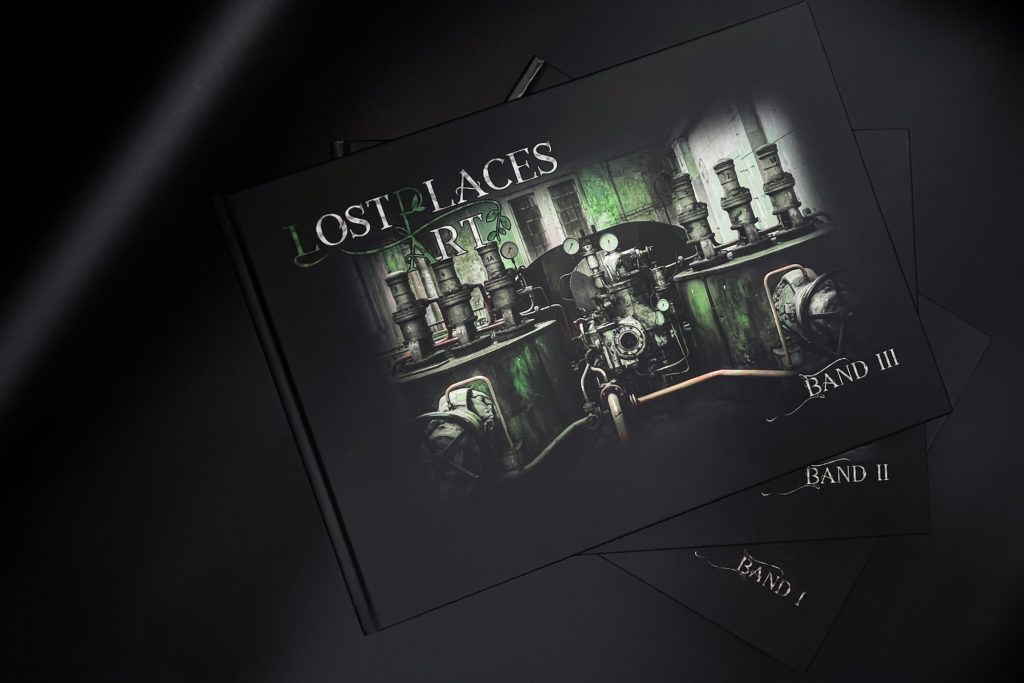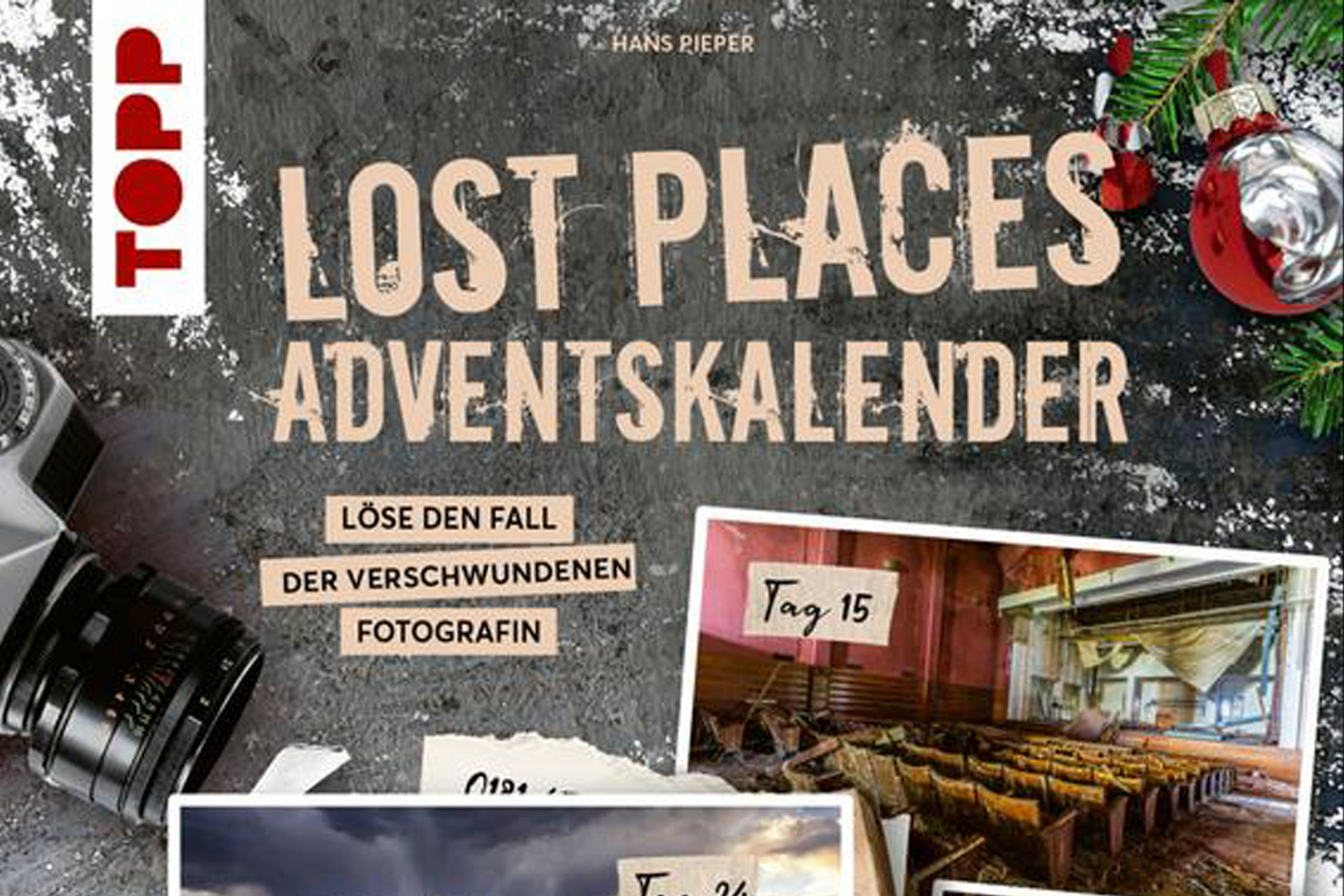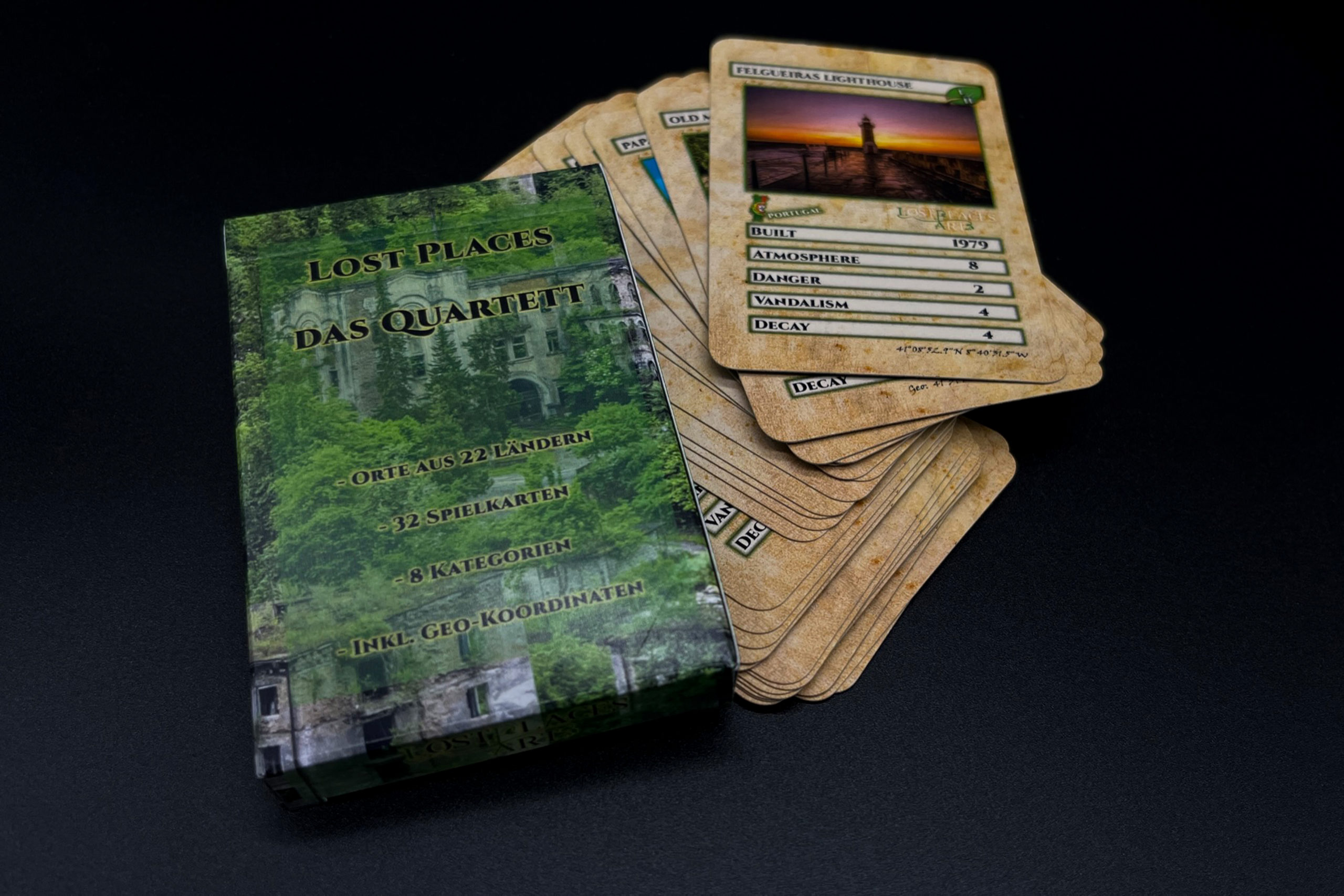Questions and Anwers
Die häufigsten Fragen, die ich über mein Beruf gestellt bekomme, findet ihr hier in Form eines kleinen FAQ beantwortet. Falls eure Fragen auf dieser Seite nicht beantwortet werden, könnt ihr mir gerne eine E-Mail an info@lost-places.com schicken oder mich in unserem Diskussionsforum per P.M. kontaktieren. Ich bin stetig bemüht, alle Anfragen zeitnah zu beantworten.
Here you will find the most asked questions about my job. In case your questions aren’t answered on this site, please send me an email to info@lost-places.com or contact me on the discussions forum via D.M. I’m always trying to answer all inquiries promptly.
Was beudetet Urban Exploring (Urbex)?
Whats is Urban Exploration (Urbex)?
Urban Exploration is the research of man-made buildings. This often refers to the exploration of old castles and industrial ruins but also sewers, catacombs, roofs or inaccessible rooms of still used facilities. They can all serve as UrbEx- Locations. However, the term is also be used for visiting publicly accessible locations – such as tourist facilities, cemeteries or inhabited properties
Warum sind die meisten Objekte unter falschem Namen aufgeführt?
Vandalismus, Diebstahl und „Massentourismus“ haben in den letzten Jahren durch die Vielzahl an Internetpräsenzen, die sich mit dem Thema „Lost Places“ auseinandersetzen, stark zugenommen. Damit uns die Gebäude mit ihrer meist umfangreichen Historie noch lange unberührt erhalten bleiben, werden die richtigen Namen durch Fantasienamen ersetzt.
Why are the most locations listed under the wrong name?
Vandalism, theft and mass tourism has increased significantly in recent years due to the large number of websites that deal with the topic of ,,Lost Places“. To protect the buildings with their extensive history, the real names have been replaced with fantasy names.
Gibst du Adressen von Objekten auf Anfrage heraus?
Grundsätzlich: Nein! Allerdings bin ich immer offen für neue Projekte oder Ideen, die sich an solch wunderbaren Orten realisieren lassen. Daher steht es jedem frei, mich mit einem guten Exposé vom Gegenteil zu überzeugen.
Why are the most locations listed under the wrong name?
Basically: No! However, I’m always open to projects or ideas that can be realized in such astounding places. Therefore, everyone is free to convince me otherwise with a good synopsis.
Wie viel Geld investierst du?
Zum Einen wird die Geldbörse durch die immer weiter steigenden Anfahrtskosten zu den Objekten belastet, zum Anderen ist es auch der Verschleiß des Automobils, der hin und wieder ein Loch in die Kasse reißt. Dazu kommt natürlich noch das Fotoequipment und diverse wichtige Ausrüstungsgegenstände wie z.B. Helme, Taschenlampen und Sicherheitsschuhe, die für einige Begehungen sehr wichtig, wenn nicht gar unverzichtbar sind.
How much money are u investing?
On the one hand, the wallet is burdened by the constantly increasing travel costs. On the other hand, is the wear of the car that occasionally tears a hole into the already burdened wallet. Of course, there is also the photo equipment and various other important items such as helmets, flahlights and safety shoes which are very important, if not essential, for some locations.
Wie findest du diese außergewöhnlichen und verlassen Orte?
Die Suche nach Lost Places erstreckt sich von Internetrecherchen über das Pflegen persönlicher Kontakte bis hin zum Anfahren interessanter Gebiete rund um den Globus. Internetseiten wie z.B. Google Maps, Flickr und Panoramio vereinfachen natürlich den Explorern die Suche ganz enorm und ersparen viel Zeit und Geld.
How do you find these extraordinary and lost places?
The search for Lost Places ranges from internet research to information from personal contacts to just driving to interesting areas around the world. Internet sites such as Google Maps, Flickr and Panoramio help enormously with the search and save a lot of time and money.
Wieviel Zeit investiert du in deinem Beruf?
Der Beruf an sich ist sehr zeitintensiv, da es viele zeitraubende Aspekte beinhaltet- wie etwa das Aufspüren der Lost Places/der außergewöhnlichen Orte, die Anfahrten zu sehr weit entfernten Objekten oder die Bildauswertung /- bearbeitung nach meinen Touren.
How much time do you invest into your job?
The job itself is very time-intensive as it contains many time-consuming aspects, such as tracking down Lost Places/unusual places, driving to faraway locations or photo evaluation/processing after the tours.
The Rating System
Die Bewertung der einzelnen Orte setzt sich durch meine Erfahrungen beim Begehen der Objekte zusammen. Der Durchschnitt von dem bislang Gesehenen ergibt sich also aus den von bisher besuchten Orten gewonnenen Eindrücken. Was genau die Bewertungs-Kategorien und die Anzahl der Sterne bedeutet, werde ich nun in einer Tabelle erläutern. Natürlich ist es möglich, das sich der Zustand nach meinem Besuch verändert. Daher kann ich nur die Gegebenheiten zum Zeitpunkt der von mir geschossenen Aufnahmen einschätzen.
The rating of the individual locations is based upon my experience while walking through it. The average results from what’s seen but also from the impression I’ve gained from other locations. I’ll now explain in a table what exactly the rating categories and the number of stars mean. Naturally, it’s possible that the conditions have changed after I went there. Therefore, I can only rate the experience I had at the time I took the photos.
Atmosphere / Atmosphäre
Gibt an, ob sich das Objekt in einer vermüllten oder wunderschönen Umgebung, wie z.B. Meer, Klippen etc. befinde
- 0/5 Vermülltes ödes Umfeld
- 1/5 Normales Umfeld
- 2/5 Gutes Umfeld
- 3/5 Schönes Umfeld
- 4/5 Sehr schönes Umfeld
- 5/5 Überwältigendes Umfeld
Indicated whether the location is in a littered or beautiful environment, such as the sea, cliffs etc.
- 0/5 Littered barren environment
- 1/5 Normal environment
- 2/5 Good environment
- 3/5 Nice environment
- 4/5 Very nice environment
- 5/5 Overwhelming environment
Risk / Gefahr
Gibt an, welche Gefahr man sich bei der Erkundung dieses Ortes aussetzt. Dabei spielt unter anderem das Land, die Umgebung und die Bausubstanz eine Rolle.
- 0/5 Ungefährlich
- 1/5 Aufpassen wo man hintritt
- 2/5 Mit Vorsicht zu genießen
- 3/5 Vorsichtig zu erkunden
- 4/5 Hohes Risiko
- 5/5 Sehr hohes Risiko
Is there a danger one exposes oneself to while exploring this place. Among other things, the country, the environment and the condition of the building play a role.
- 0/5 Safe
- 1/5 Be careful where you step
- 2/5 To be consumed with caution
- 3/5 Careful to explore
- 4/5 High risk
- 5/5 Very high risk
Vandalism / Vandalismus
Gibt an, wie stark der Vandalismus in einem Objekt vorangeschritten ist.
- 0/5 Kein Vandalismus zu finden
- 1/5 Sehr wenig Vandalismus
- 2/5 Leichter Vandalismus
- 3/5 Fortgeschrittener Vandalismus
- 4/5 Stark ausgeprägter Vandalismus
- 5/5 Totale Zerstörung und Verwüstung
Indicates the degree of vandalism at the location.
- 0/5 No vandalism
- 1/5 Very little vandalism
- 2/5 Slight vandalism
- 3/5 Advanced vandalism
- 4/5 Strong vandalism
- 5/5 Total destruction and devastation
Decay / Verfall
Zeigt den aktuellen Grad des Verfalls eines Objektes an.
- 0/5 Kein Verfall zu erkennen
- 1/5 Schimmelpilz und Feuchtigkeit in den Wänden
- 2/5 Putz blättert ab, modriger Geruch
- 3/5 Böden geben nach, Decken drohen einzubrechen
- 4/5 Objekt nur noch teilweise zu begehen, teils eingestürzt
- 5/5 Begehung kaum noch möglich, das Endstadium des Verfalls
Indicates the current degree of decay.
- 0/5 No decay to be found
- 1/5 Mold and moisture in the walls
- 2/5 Plaster peels off, mouldy smell
- 3/5 Floors break, ceilings threaten to collapse
- 4/5 Location is partially accessible, partially collapsed
- 5/5 Location is barely accessible, the final stage of decay
Architecture
Hier findet ihr Informationen zu den architektonischen Baustilen der vergangen Epochen welche mit Beispielen von mir besuchten Orten ergänzt wurden.
Here you can find information about the architectural styles of the past epochs with examples of the places I have visited.
Nach Chr. Romanik / After Ch. Romanesque
0950 – 1250
- Frühromanik (950 – 1050)
- Hochromanik (1050 – 1150)
- Spätromanik (1150 – 1250)
Der romanische Baustil enthält verhältnismäßig wenige Verzierungen und die Bauwerke wirken meist klobig und markant. Typisch sind die dicken Mauerwerke die nur sehr kleine Türen und Fenster beinhalten. Die Grundriss -Formen beschränken sich auf Kubus, Quadrat und Rundbögen.
- Early Romanesque (950 – 1050)
- High Romanesque (1050 – 1150)
- Late Romanesque (1150 – 1250)
The Romanesque architectural style contains relatively few ornaments and the buildings mostly appear chunky and striking. Typical is the tick masonry that contains only very small doors and windows. The floor plan shapes are limited to cubes, squares and arches.
Nach Chr. Gotik / After Ch. Gothic
1140 – 1550
- Frühgotik (1140–1250)
- Hochgotik (1250–1350)
- Spätgotik / Tudorgotik (1350–1550)
Der gotische Stil entwickelte sich aus dem mittelalterlichen Stil der Romanik heraus. Kreuzrippengewölbe und Spitzbögen in Fenstern und Türen sind ein typisches Merkmal für die Zeit der Gotik. Verzierungen hingegen findet man bei gotischen Gebäuden nur selten. Dafür dominieren steile Türme und eine große Ansammlung von Fenstern, Toren und steinernen Schmuck.
- Early Gothic (1140–1250)
- High Gothic (1250–1350)
- Late Gothic/Tudor Gothic (1350–1550)
The Gothic style developed from the medieval Romanesque style. Ribbed vaults and pointed arches in windows and doors are a typical feature of the Gothic period. Decorations, on the other hand, are rarely found in Gothic buildings. Steep towers and a large collection of windows, gates and stone jewellery dominate.
Nach Chr. Renaissance / After Ch. Renaissance
1420 – 1610
- Frührenaissance (1420 – 1500)
- Hochrenaissance (1500 – 1550)
- Spätrenaissance / Manierismus (1520 – 1610)
Die Renaissance ist die Weiterführung der Gotik. Bei diesem Stil achtete man besonders auf die Symmetrie. Das Augenmerk wird hier auf horizontale und vertikale Linien gelenkt. Typisch sind Rundbögen, ein treppenförmiger Giebel, das Satteldach und Säulen.
- Early Renaissance (1420 – 1500)
- High Renaissance (1500 – 1550)
- Late Renaissance/Mannerism (1520 – 1610)
The Renaissance is the continuation of the Gothic style. With this style, particular attention was paid to symmetry. The focus here is on the horizontal and vertical lines. Round arches, a stepped gable, the gable roof and columns are typical.
Nach Chr. Barock / After Ch. Baroque
1570 – 1770
- Frühbarock (1570–1650)
- Hochbarock (1650–1720)
- Spätbarock / Rokoko (1720–1770)
Beim barocken Stil scheint es keine geraden Linien zu geben. Hier überwiegen die kurvigen und kreisenden Bewegungen. Die Fassaden wurden meist farbig gestrichen. Gebäude und Gärten wurden wie bei der Renaissance symmetrisch erbaut. Die Räume wurden mit besonders viel Stuck verziert.
- Early Baroque (1600–1650)
- High Baroque (1650–1720)
- Late Baroque/Rococo (1720–1770)
There seem to be no straight lines in the baroque style. Here the curvy and circular movements predominate. The facades were mostly painted in colour. Buildings and gardens were built symmetrically, like in the Renaissance. The rooms were decorated with a lot of stuccoes.
Nach Chr. Klassizismus / After Ch. Classicism
1750 – 1840
- Frühklassizismus (1750–1770)
- Revolutionsarchitektur (1750–1790)
- Klassizismus / Empire (1770–1840)
Auf die griechische Antike bezieht sich der Klassizismus. Horizontale und vertikale Gliederung sowie das Giebeldreieck mit langen Säulenreihen sind die typischen Merkmale dieses Baustils. Allerdings wurde mit den Verzierungen an Bauwerken eher sparsam umgegangen, weshalb diese oft nüchtern, sparsam und streng wirken.
- Early Classicism (1750–1770)
- Revolutionary architecture (1750–1790)
- Classicism/Empire (1770–1840)
Classicism refers to ancient Greece. The horizontal and vertical structure, as well as the gable triangle with long rows of columns, are the typical features of this architectural style. However, the decorations on buildings were used sparingly, which why they often appear sober, economical and strict.
Nach Chr. Historismus / After Ch. Historicism
1830 – 1950
- Eklektizismus (1830 – 1900)
- Neugotik / Neogotik / Gothic Revival (1840–1900)
- Neorenaissance / Neurenaissance (1850–1885)
- Neuromanik (1870 – 1920)
- Neobarock (1880 – 1920)
- Neoklassizismus (1890 – 1950)
Der Historismus ist eine Mischung aus allen Stilepochen. Hier finden sich alle bekannten Stile wieder, nur wurde meist bei der Größe und Höhe der Bauwerke übertrieben. Viele verkehrstechnischen Bauwerke wie z.B. Brücken aus dem 19ten Jahrhundert wurden im Stil des Historismus erbaut.
- Eclecticism (1830 – 1900)
- New Gothic/Neo gothic/Gothic Revival (1840–1900)
- Neo Renaissance/New Renaissance (1850–1885)
- New Romanesque (1870 – 1920)
- Neo Baroque (1880 – 1920)
- Neo Classicism (1890 – 1950)
The Historicism is a mix of all styles. All known styles can be found here, mostly only the size and height of the buildings were exaggerated. Many traffic engineering structures such as Bridges from the 19th century were built in the style of historicism.




